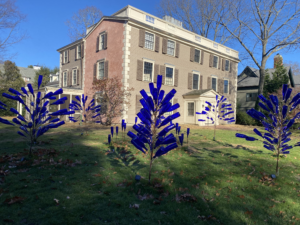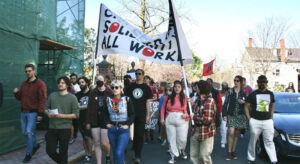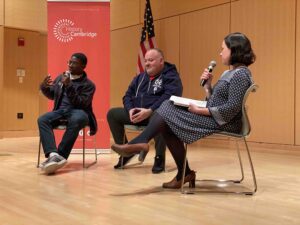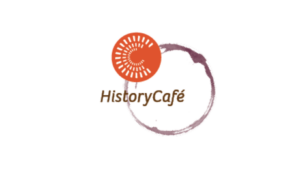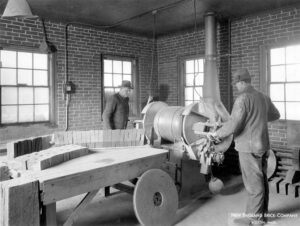Posts Tagged ‘2022 Who Are Cambridge Workers’
History Cambridge looks back at 2022
As 2022 comes to a close, History Cambridge is looking back on a year filled with events and collaborations that have helped us to live into our mission to collect and share the stories of all Cantabrigians. Our theme for 2022 was “Who Are Cambridge Workers?” Many of our programs focused on the history of labor in the city, but we also held events and created partnerships in other areas of Cambridge history, including our temporary art installation honoring the lives of the enslaved people who lived and worked on Brattle Street.
Read MoreHistory Cambridge’s Fall Conversation asks, ‘How Does Cambridge Unionize?’
How do Cantabrigians see themselves as workers? How is their identity linked to their work? Do they see themselves as part of a local workers’ community, or do they identify with their profession across geographical boundaries? History Cambridge will explore these and related issues in a Nov. 14 event.
Read MoreNov. 14 Fall Conversation 2022 Recap: How Does Cambridge Unionize?
The final program in our year of asking “Who Are Cambridge Workers?” will focus on labor organizing in Cambridge, both past and present. How do Cantabrigians see themselves as workers? How is their identity linked to their work? Do they see themselves as part of a local workers’ community, or do they identify with their profession across geographical boundaries? How has the pandemic and the shift (for some) to remote work affected this sense of community and identity? We will be joined by representatives from the MIT Graduate Students’ Union, the Cambridge Teachers’ Union, and the 1369 Coffeehouse Workers’ Union to hear about their current organizing efforts and the future of unionization in Cambridge and beyond.
Read MoreJuly 28 History Café Recap: Changing Tides in Cambridge Industry
What did the industrial landscape of the city look like in the 19th and 20th centuries, and what sectors are prominent today? How have waves of migration—both domestic and international—shaped the demographic makeup of Cambridge’s industrial labor force? What struggles have workers faced in the city’s largest industries, and how have they organized and advocated for themselves? What roles have race and gender played in the dynamics of Cambridge industry?
Read MoreSelf-Guided Tour: The Work of Revolution in Cambridge
Introduction For many, the first image that comes to mind when thinking of Cambridge during the Revolutionary Era is that of General George Washington taking command of the Continental Army on Cambridge Common in July of 1775, under what would come to be known as the Washington Elm. Although we now know that this tale…
Read More‘Changing Tides in Cambridge Industry’ talk will examine wave of labor and immigration
Since its beginnings as a colonial settlement, Cambridge has seen numerous shifts in its population, as waves of migrants arrived from various parts of the United States and around the world. As these new Cantabrigians arrived in the city needing work, many found jobs in the city’s industrial sector, most notably in the glass, brick, furniture, meatpacking and confectionary factories in Cambridge. Employment in many of these industries was dominated by different immigrant groups at different periods, with newer arrivals taking jobs in lower-paying, more physically demanding sectors. Eventually these ethnic groups would move up the socioeconomic ladder, finding employment in more lucrative and less strenuous industries while the next wave of newcomers replaced them. For many, similar work experience at home and the recommendation of friends, family or others of their same ethnicity led them to choose a particular industry. For others, their status as immigrants drastically limited the employment options open to them. Whether by choice or circumscription, the clustering of migrant groups in particular industries helped shape the labor landscape of Cambridge.
Read MoreJune 23 History Café Recap: The Work of Revolution
How did unpaid labor enable the Revolutionary leaders of Cambridge to foment rebellion and to carry out the political and military duties of the War? Although much is known about George Washington’s residency in Cambridge in the early days of the Revolution, the reality is that it was the labor of women and people of…
Read MoreGilded Age Cambridge eyed the Haymarket Affair as misconduct from ‘those Bohemian anarchists’
How labor won over suspicion resulting from violence in Chicago
Read MoreUpcoming History Cafe will pose the question: Washington slept here, but who made his bed?
A talk on women, Black Cantabrigians and the work of revolution
Read MoreFeb 17 – I’m a Good Person! Isn’t That Enough?
Join us for a virtual presentation of “I’m a Good Person! Isn’t That Enough?” with Cantabrigian author and speaker Debby Irving. Using historical and media images, Debby Irving examined how she used her white-skewed belief system to interpret the world around her. Socialized on a narrow worldview, Debby explored how she spent decades silently reaffirming…
Read More
